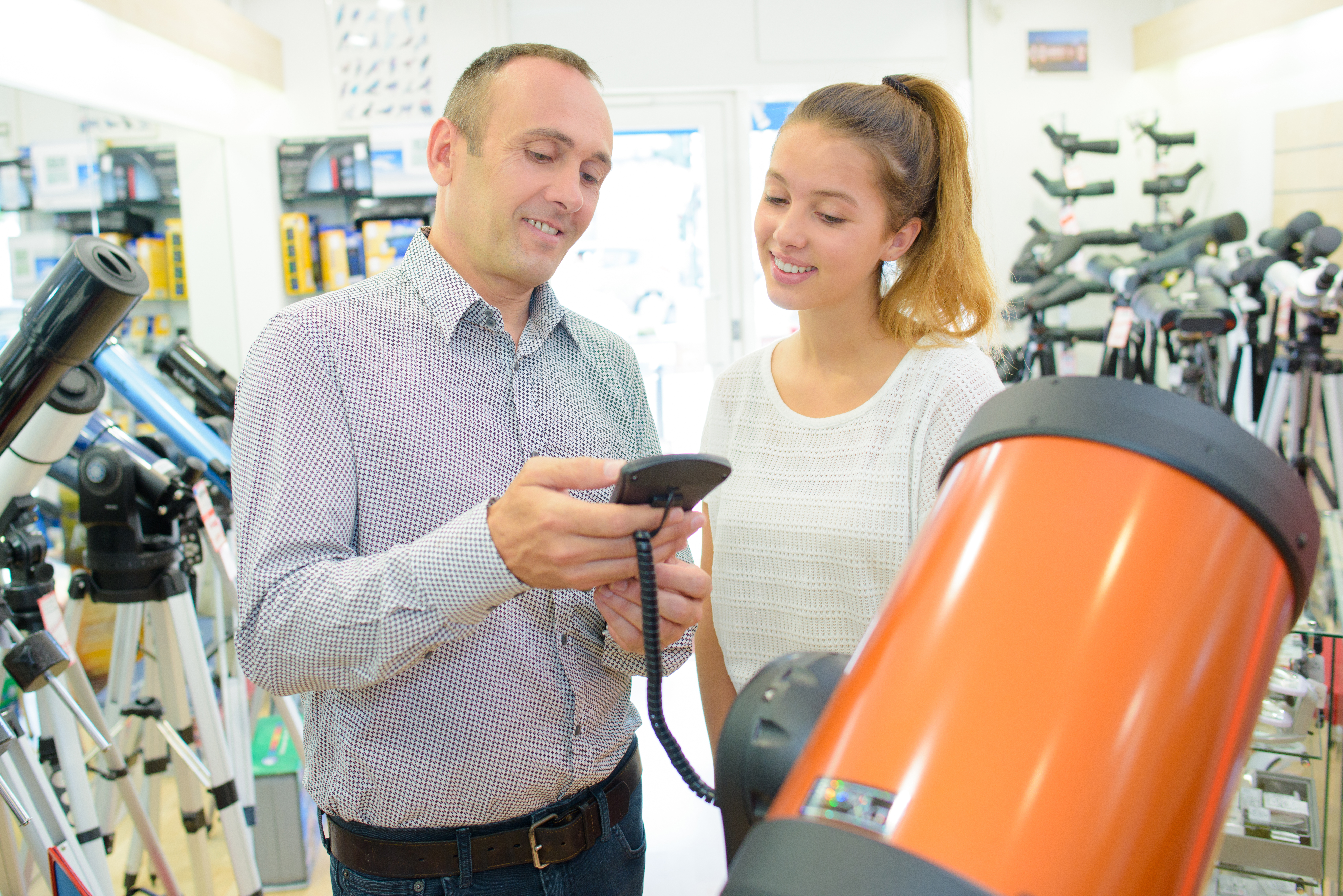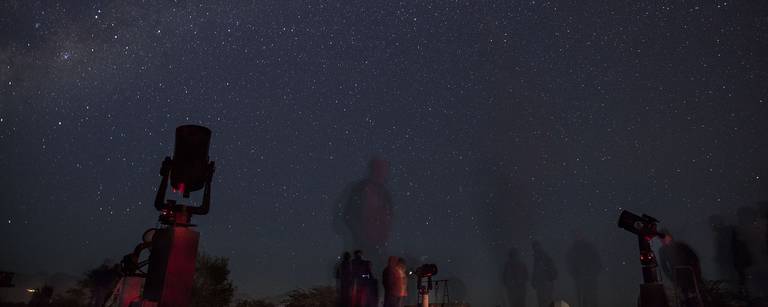Telescopes for beginners

What kind of telescope should I buy? This is probably the most asked question in any astronomy gear shop, and as you can imagine, there is no easy answer. It depends. If you’ve read our article on the different types of telescopes, you already know that there are reflectors and refractors, but knowing this won’t help you decide which telescope to choose.
Amateur astronomers are generally divided into two categories: visual observers and photographers. Not that these categories are completely hermetic, it’s just that people usually spend most of their time doing one or the other. In this article, we won’t be talking about astrophotography, a complex subject on which books could be and have been written. For now, let’s stick to visual observation, which is what beginners should do, and we’ll give you some pointers to pick the instrument that best suits your needs and budget.
What are the essential parts of a telescope?
The three essential parts you should have in mind when you buy your first telescope are the optical tube, the mount and the eyepieces. We’ll go over these parts in detail below.
What to look at?
To start off with, there are two categories of objects to observe. First, you can see objects in our solar system, like the planets, the Moon and even the Sun — provided you use the appropriate equipment (never turn any kind of magnifying optics toward the Sun without filters specifically designed for that purpose). Second, you can see objects located outside our own galaxy, including other galaxies, the remains of supernovae and so forth. Targets in the second category are usually known as deep sky objects. If you want to observe the planets and the Moon, you’ll need a telescope with a strong focal length, which means strong magnifying power. For deep space objects, you may need a large diameter lens or mirror because these objects are, in general, pretty dim and you’ll need to collect as much light as you can. Again, check out Different Telescope Types for Amateur Astronomers to learn more about lenses, mirrors and focal lengths. A pair of quality binoculars is already a good choice of instrument not only for beginners but also for more experienced amateurs. I use this model to wander through the sky while I wait for my astrophotography gear to finish long exposures. Check Astronomy with Binoculars: What to See in the Northern Hemisphere to learn more.
Read also: What telescope to buy for a beginner?
In a nutshell, when shopping for a telescope for beginners, you’ll have to take into consideration the following elements:
—the sky
—portability and ease of use
—magnification and field of view
—budget
The sky
Light pollution is a real problem for astronomers nowadays, unless you live far from any cities or towns... If you’re in a more populated area, chances are that you’ll be limited in what you can see. The moon and the planets can be observed, even from major cities because they are close to us, but anything deeper in space may require a trip out of town to get away from the effects of the street lighting, and you’ll get an especially fantastic view if you’re can get to one of those rare dark sky areas. This leads us to our next topic: portability.
Portability and ease of use
All telescopes need a mount with a tripod. There are many different types of telescope mounts, but we are going to focus on the two main ones: altazimuth mounts and equatorial mounts. We have an article about telescope mounts that covers the differences between them in detail, but all you need to know at this point is that equatorial mounts compensate for the rotation of the Earth while altazimuth mounts don’t. Although compensating for the rotation of the Earth is fundamental for astrophotographers, beginners and people who are only interested in visual astronomy don’t really need this. For sure, it may come in handy when you’re observing planets using an instrument with strong magnifying power because, in this case, you’ll need to center your telescope often. If you’re using a scope with stronger magnification, the apparent movement of whatever appears in your eyepiece is more perceptible, and yes, equatorial mounts do make centering easier. That said, they are often bulky and more complex to set up and operate.
The focal length, and thus the magnification, is determined by the length of the telescope’s tube. Like the mount, focal length plays a role in how easy your telescope will be to move around. If you have a back yard with a decent sky (and if you do, I’m really jealous), weight and bulkiness may not be at the top of your priority list, but if you need a transportable setup, that’s a different story.
Magnification and field of view
Magnification and field of view will determine what you’ll be able to see with your instrument. The magnification of your instrument can be obtained using the following formula:
m = F/f,
where m is the magnification, F is the focal length of the telescope in millimeters and f is the focal length of the eyepiece in millimeters. For instance, a telescope with a focal length of 1000 mm (F) and an eyepiece with a focal length of 8 mm (f) will have a magnification of 1000/8 = 125 times.
Eyepieces are another very important type of equipment. On a telescope, these are interchangeable and come in two different sizes: 1.25″ (31.5 mm), which is the most common, and 2″ (50.8 mm). Telescopes are designed to be used with either of these two sizes, although adapters exist. Eyepieces have their own focal length and they also have a field of view. Let’s see how field of view is calculated.
The apparent field of view is an angle (°), and sometimes this information is written on the eyepiece itself along with its focal length. In wide eyepieces, the apparent field of view ranges from 60° to 110°. Narrower eyepieces can go down to 45°. This value tells you how large a portion of the sky you can see if you’re looking through your eyepiece directly, without using your telescope. While this is certainly useful for comparing different eyepieces, what you really need to figure out is what you’ll actually be able to see when you use the eyepiece on your telescope, the true field of view. This value decreases as the telescope’s focal length increases. The greater the magnification, the narrower the true field of view!
Here’s how to determine the true field of view:
TFOV = AFOV/m.
In this equation, TFOV is the true field of view, meaning the portion of the sky you’ll actually see, AFOV is the apparent field of view of your eyepiece, and m is the magnification (which we showed you how to calculate above). If our telescope has a magnification ratio of 125, and we use an eyepiece with an apparent field of view of 50°, this calculation shows us that we can see a portion of the sky that is 0.4° wide. This is smaller than the 0.5° diameter of the Moon.








